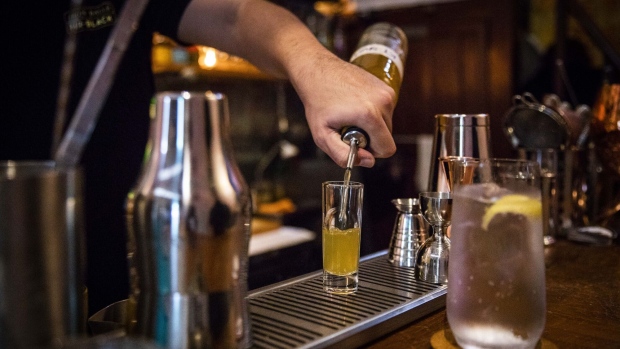Nov 10, 2023
What to Know About Kava and Kratom, Sold as a Booze-Free High
, Bloomberg News

(Bloomberg) -- Over the last decade, the number of bars selling something called “kava” has grown. However, the non-alcoholic drink is propped up by another substance on the menu: kratom.
While kava and kratom are both plant-based drinks sold in similar places, the two substances are actually unrelated. Kratom (pronounced cray-tum) carries far greater risk for addiction.
What is kratom?
Kratom is a drink extracted from a plant native to Southeast Asia. In low doses, kratom acts as a stimulant, and it is known to be an energy booster, mood enhancer and pain reliever. In higher doses, kratom can have addictive, opioid-like properties, according to the National Institutes of Health. In extremely rare cases, it has resulted in fatal overdoses.
How long does a kratom high last?
Kratom takes effect after five to ten minutes and can last for two to five hours, according to the Mayo Clinic. Its effects become stronger in higher quantities.
Is kratom bad for you?
In low doses, the adverse effects of taking kratom typically results in little more than mild stomach problem, according to Oliver Grundmann, a professor at the University of Florida who has studied kratom since 2016. More concentrated forms are associated with addiction, as well as liver and cardiovascular toxicity. However, the full effects of kratom are still unknown.
Is kratom legal in the US?
Kratom is not illegal on the federal level, but regulations vary state by state. Some have banned the substance, while others have imposed regulations for consumers under the age of 21.
What is kava?
Kava is an extract made from a plant called Piper methysticum that has been used for hundreds of years in the South Pacific. It’s often mixed with water and served as a drink.
Is kava dangerous?
There are some risks with kava, especially when used alongside substances like alcohol or anxiety medications, according to the Cleveland Clinic. There have been reports of liver toxicity in Europe and US, but surveys of places where kava has been used historically haven’t found long-term liver damage. Other possible effects include tremors, drowsiness and nausea.
Why are kratom and kava served together?
Kava bars became popular in the US in the early 2000s, and vendors at kava bars saw kratom as a way to increase sales. They are both plant-based products, but otherwise have no known common origins. It’s unclear why they were initially paired.
©2023 Bloomberg L.P.


